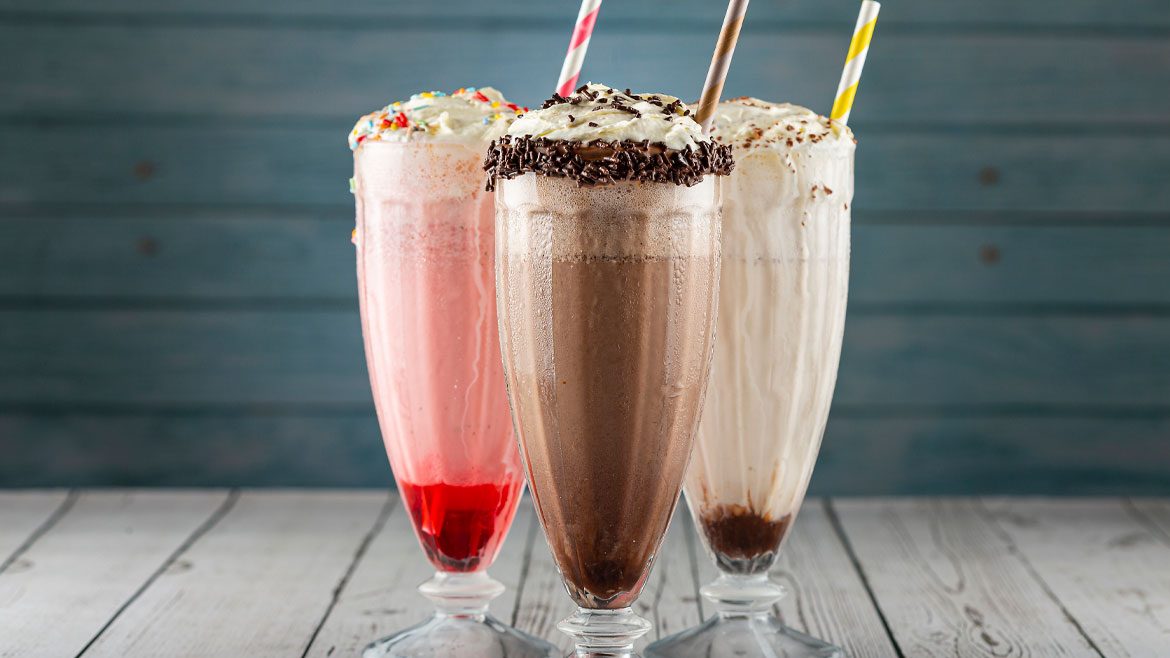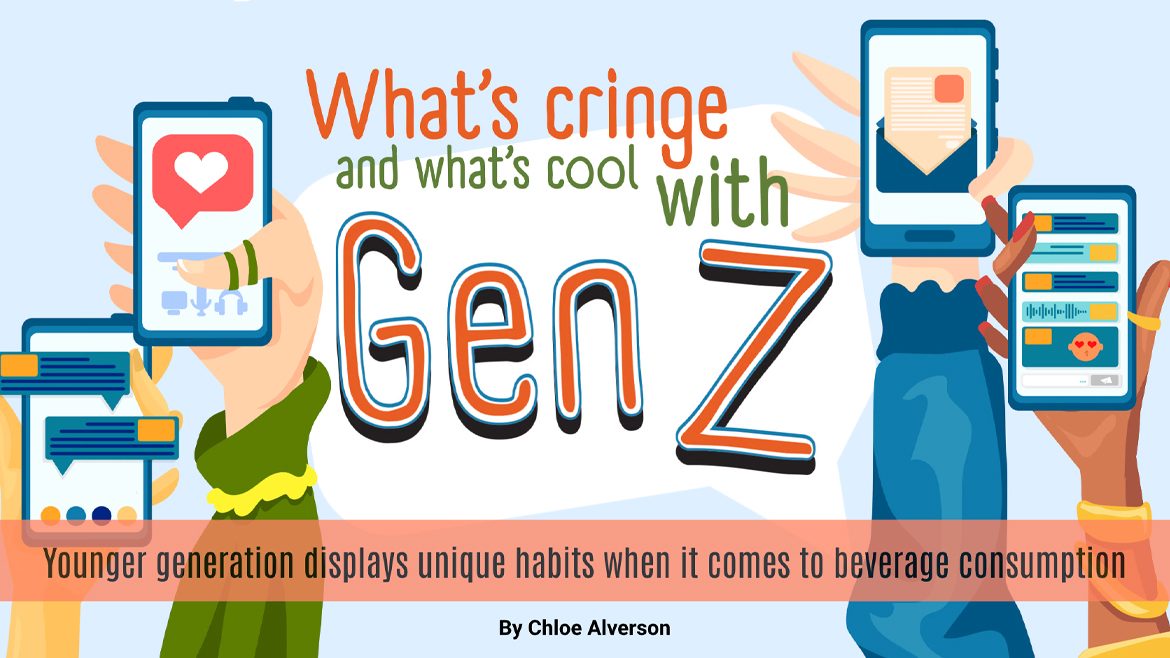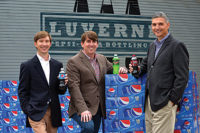Rock Co. Bottler of the Year
Buffalo Rock Co. Bottler of the Year
By ELIZABETH FUHRMAN
2007 brings product additions and production expansion
What are some perks of being in business more than 100 years? Knowledge of the industry and long-term experience make for a strong company. But sometimes it is not your history but your most recent accomplishments that make you an overachiever in the industry.
This is the case for Buffalo Rock Co., Birmingham, Ala., with its 106 years in business and average 30 years experience among its executive leadership team. Longevity and continuity speak volumes, but the company isn’t resting on these accomplishments and letting the changing industry pass it by.
“What we have chosen, as a company, is to go
down the path of continuous improvement and never get off,” says
Matthew Dent, executive vice president and chief business operations
officer.
Buffalo Rock — as a private, family-owned Pepsi
and Cadbury Schweppes bottler — has the flexibility to make quick
decisions. James Lee III, president, chief executive officer and fourth
generation of the founding family, brings more than 40 years experience to
his more than $575 million-company. He sees the management team’s
staying power and knowledge of the industry as huge advantages.
“They know the ins and outs of the
company,” Lee says. “They know everyone’s personality and
the team has good continuity. Overall, we have very little turnover in our
management ranks, and fortunately we are able to promote within the
company, which is good for morale.”
But during the 106 years, the sixth-largest Pepsi
bottler and the ninth-largest Cadbury Schweppes bottler also has seen the
industry change in more ways than Lee can remember.
“It’s rapidly changing, with all different
niche companies and niche products entering the market,” he says.
“The consumers themselves are going through a transformation with
carbonated soft drink consumption, and as a result those brands are not
growing as well. And we compete against strong Coke bottlers. In the South,
every Coke bottler is a very strong competitor, which makes us a better
operator because we have to be better to compete.”
The growth of niche beverages adds challenges for the
bottler. “We’re constantly introducing new products, whether
they are CSD brand extensions by Pepsi or Cadbury [Schweppes] or additional
offerings of waters, juices and energy drinks,” Lee says.
These new SKUs and improved strategies by the parent
companies have contributed to growth during the past few years, Dent says.
“We went through, and we’re still going through a series of big
process improvements,” he says. “We have more integrated
strategic plans than we’ve had in the past, in terms of integrating
parent company direction and tying that into our route system. In general,
the partnership with our parent companies is as strong as it has ever
been.”
Line changes
Buffalo Rock attributes some growth to the parent
companies’ innovative new product introductions. “We have been
lucky to have some very successful brand innovations during the last couple
of years that are helping us succeed,” Dent says. “It’s
not just what we’re doing that is providing growth, but what the
parent companies are doing as well.”
Non-carbonated and premium non-carbonated products are
the fastest-growing segments of Buffalo Rock’s business, Dent says.
“Innovations in these segments have been very strong additions for us, such as the Lipton Brewed Teas and [Starbucks]
Frappuccino extensions,” he explains.
But innovations in carbonated soft drinks also have
benefited the company. “Because we are in the South, we are still a
CSD marketplace,” Dent explains. Flavor additions such as Sunkist
Cherry Limeade and the Dr Pepper Soda Fountain Classics line have been
strong launches, as have energy drink additions.
This summer, Buffalo Rock picked up the distribution rights for
Hansen’s Monster, Lost and Rumba brand energy drinks in addition to
the energy drinks it carries for Pepsi such as SoBe’s No Fear and
Adrenaline Rush and Mountain Dew’s MDX and Amp.
Buffalo Rock made the decision in 2006 to carry
Pepsi’s lemon-lime Sierra Mist instead of 7 Up. “It was a tough
decision to drop 7 Up because the company had been a 7 Up bottler for more
than 40 years,” Lee says. “It had to do more with system
alignment, and Sierra Mist is an excellent product.”
Making the switch to Sierra Mist has increased Buffalo
Rock’s presence in the lemon-lime category. “It’s really
helped from an alignment standpoint with national and regional customers,
due to their ad structures and how they go to market with our
system,” says Warren Austin, vice president of customer development,
sales and service.
Employee empowerment
Changes to product lines, manufacturing and the way
Buffalo Rock goes to market do not just come from upper management’s
ideas but from within the whole company. “Several years ago, we
really got serious about our processes around empowering our people,”
Austin says. “The sales force is out there day in and day out, and
they are not scared to make decisions.”
That employee empowerment, called “Team
Rock,” applies to all aspects of our business. “That adds
agility with our people being more involved, gives them a certain ownership
and allows them to move quicker,” Dent says.
The company has a process through which employees can
send in ideas for improvement. Teams are then formed that are involved in
the decision-making process. “A lot of times, we’re amazed with
the ideas that they have come up with,” Austin says. “There are
improvements we’ve made because they have taken ownership.”
Continuous improvement efforts have visibly helped
speed up the growth of the organization’s overall ability, no matter
the task or challenge at hand, Dent says, with the company more clearly
integrating parent company direction, including introducing new product
innovations, all the way down to the route system.
“Part of our increased ability can be attributed
directly to the implementation of the Balanced Scorecard Management System,
which was developed in 2004 and implemented at the start of 2005,”
Dent explains. The scorecards have provided Buffalo Rock’s 14
distribution centers with consistent focus and similar performance
measurement metrics, which has really created a company with centralized
strategy and stronger execution capabilities. These metrics are monitored
continually and measured quarterly against preset targets, with employee
partners being rewarded for achieving performance targets through
participation in quarterly paid “gain-sharing incentives.”
“All of our various locations have the same
strategic objectives that we’re measuring daily, weekly and
monthly,” he continues. “Everybody knows where we stand in
regard to what goals we have set out to accomplish together.”
The company also has upgraded its handheld system to
wireless technology. “The wireless handhelds can send information
back to the warehouse, and be able to get the load picked before the person
ever gets in,” says Roger Barker, senior vice president and chief
financial officer. “The DDE [Delivery and Distribution Engine]
inventory system tracks loads when we ship them. We can scan the loads and
automatically take them in and out of inventory, and we are able to unload
the truck and have all the information right there as they are
scanned.”
“Using this technology will ultimately increase
efficiency more than 40 percent,” Barker says. “It’s
taking out all the manual reads, manual counting and human errors that
would cause the need to come back and recalculate.”
But the biggest benefit the new handhelds have
provided the sales force is the ability to make quick decisions. “The
people have the data right there in the system any time they want it, right
there in the field,” Barker says.
Buffalo Rock’s 14 distribution centers are run
by 12 general managers who are responsible for all activities of more than
2,400 employees. At the corporate office, the company has a brand manager,
Ike Beasley, director of corporate development and selling strategy, who is
the direct link to the parent companies and who considers marketing for the
current brands, future innovations and the parent companies’
merchandising standards. The planograms for all of Buffalo Rock’s
beverage sets are centrally maintained on a quarterly basis by Lashanta
Lawrence, corporate marketing administrator. Additionally, the company employs two key strategic sales experts, Dick
Hanson, executive director of premise strategic sales and marketing, who
handles all fountain, coffee, cold bottle and full-line vending, and
Christian Miller, executive director of retail strategic sales and
marketing, who manages all retail customer strategy for key accounts and
local trade.
All brands run on every route where the company holds
the franchises. “Brand management is more segmented by delivery
method and customer type, and it is everybody’s job to promote our
brands and provide opportunities for growth,” Dent says.
Changing industry
Buffalo Rock plans to continue expanding its business
through new products from its franchise companies and with other products
it will pick up in the future. “Obviously, the innovation that is
coming from the parent companies is very much appreciated, and we’re
aligned to execute those innovations,” Dent says. “I think
Buffalo Rock has always been known for innovating, and will continue to
look at packaging innovations as well as other brands that we may represent
in the future to further drive growth.”
Buffalo Rock uses a sales system it calls AIM Selling
(Analyze, Improve, Monitor), a process that it has benchmarked against
Anheuser-Busch’s IMPACT selling, with the help of the Russell
Training Group. When a new product is ready to go to market, the company
plugs it into the program calendar and execution plans are created that
everyone can plan against. Every quarter, the company plans innovations for
the next quarter. The process has to be very organized because certain new
products may have to be outsourced from other manufacturers and because the
sheer number of marketing activities is so high, Dent says.
“If you look at our SKU count in a four-year
timeframe, we’ve doubled the number of SKUs that we carry,” he
explains. “That is very tough on the infrastructure we currently
have. As we move forward with innovations from our parent companies,
we’re looking at another 100 SKUs next year. Operationally, that is
very difficult to handle and will continue to be — this is why we
must continue to improve.”
In 2006, Buffalo Rock
outsourced 12 percent of its business. These outsourced products included
Pepsi’s non-carbonated products, bottled waters and hot-fill items
such as the Starbuck’s Frappuccino and Gatorade, and were brands for
which the company did not have production capability.
The Birmingham plant produces more than 50 million
cases a year and none of those cases include water, which has prompted the
company to add an additional facility. “We are out of room in
Birmingham,” says Scott Parks, vice president of corporate
manufacturing, facilities and operations. “We don’t have any
ability to expand our manufacturing facility in Birmingham. For example, we
don’t even have the room to put in a water line, something we have
desperately needed in recent years.”
This month, Buffalo Rock acquired Southeast Canners in
Columbus, Ga. The acquisition will enable the company to produce an
additional 15 million cases of product, with the new plant operating under
the name Sun Fresh Beverages Inc. The purchase will further allow the
company to manufacture all of their water needs, and plans also are in the
works to add an additional high-speed PET line with flexible secondary
packaging capability.
“We continually ran out of bottled water each of
the last three years,” Lee says. “Sun Fresh will allow us to
better service our customers throughout our current distribution area. It
will also allow us additional production lines for our non-carbonated and
carbonated beverages where we will be able to supply other Pepsi bottlers
in our region.”
Buffalo Rock will retain all 50 Columbus employees,
and promoted a 23-year employee-partner, Tony Pope, to manage the new
facility’s plant operations. In addition, plans are being executed to
increase the workforce at Sun Fresh by nearly 30 people to be able to run
continuous operations throughout 2007. As a result of the additions, the
capacity of all Buffalo Rock’s manufacturing capabilities will
increase by nearly 30 percent.
Buffalo Rock’s distribution area covers all of
Alabama, western Georgia and the panhandle of Florida, and the company
covers a population of about 6.5 million. Currently, the company’s
bottling facility in Birmingham produces most products to be shipped to the
14 distribution centers. The farthest point from the Birmingham plant is
about 270 miles.
In 2006, Buffalo Rock doubled the size of two of its
distribution centers located in Newnan, Ga., and Pensacola, Fla. It also
added a distribution center in Talladega, Ala., to better service its
customers and increase market share in an area with a population base of
more than 220,000. Additionally, Lee sees a possible need in the future to
open another distribution center somewhere on the Gulf Coast because of the
area’s population growth, increasing seasonal draw and overall
demands on service.
In regard to its distribution centers, Buffalo Rock
operates in a fairly decentralized manner. “Our general managers at
each division level really take ownership in the business, as if they did
own the business,” Dent says. “They are responsible for the
entire operation including sales growth, profitability and even
organization and leadership development. Each of them is running a nice
size company locally.”
Path to perfection
Buffalo Rock won the highest level of the 2006 Alabama Quality Awards for its Alabama distribution
divisions, and a second level award for its corporate logistics,
manufacturing, operations and facilities in Birmingham. Based on the
Malcolm Baldrige National Quality Awards, the Alabama Quality Awards
process judges recipients on criteria for performance excellence in all
aspects of the business.
“We are on a long-term journey of improvement,
and we have our sights set on the national award,” Dent says.
“We aren’t just picking one piece of our business and saying
we’re going to be the best bottler in the country at that
function… we have our sights on being the best organization, period.
We’re constantly improving everything we do.”
In 2007, Buffalo Rock plans to continue down the path
it has been on for the past couple of years and feels it has been
successful at “growing organically as well as externally,” Dent
says.
“Not only do we have to look out for new
customer opportunities, we have to look for opportunity within the massive
customer base we already service,” he continues. “We already
have a lot of routes handling customer needs every day. We’ve got to
find ways to increase what we have to offer them in service value and in
product offerings. We may only sell fountain to a restaurant chain today, but we should be selling coffee, tea and
bottled water in the future.
“We’ve got to
organically grow within those customers to extend our reach in terms of
various product lines. That is something we’ve been very focused on
but still have much room for improvement.”
While 2007 also will have challenges such as
escalating raw material prices, the need to increase product prices to
maintain margins, the need to grow shelf space, and bringing the new
manufacturing facility online.
“I think the second manufacturing facility will
really enable us to be a regional manufacturing and distribution company
that is well positioned for future industry growth,” Lee says.
“I am excited about what our company has to offer our customers and
consumers going forward.”
Disaster preparedness
Natural disasters are not something a company wants to
think about, but reality sets in when a company is challenged with four
major storms and hurricanes (Rita, Dennis, Ivan and Katrina) in a 13-month
period. Buffalo Rock was awarded the Florida Sterling Quality Achievement
award in 2006 for its comprehensive disaster-preparedness plan, a plan
generated from its experiences dealing with the storms and benchmarked
against other major organizations. The award is given to organizations for
being role models in establishing approaches, methods, strategies or
processes from which other organizations can learn.
“We really learned from Ivan,” says Roger
Barker, senior vice president and chief financial officer. “Although
we had conference calls daily leading up to the storm on what we needed to
do, we found out that we missed a lot of things. After Ivan, we regrouped
and asked, ‘Where do we need to improve?’ That’s really
how the plan started. We were so far ahead with the last storm because we
had our processes in place.”
Buffalo Rock’s disaster plan can be initiated in
as little as five days before a hurricane hits. The key steps in the plan
are the identification of sources for additional product, preparation for
employee activities and protection, taking care of customers and finalizing
communication procedures when the storm hits. Key items such as a
refrigerated trailer, cooking capability on wheels, portable fuel and
cellular backup are critical to the plan. Buffalo Rock’s newly
purchased facility also will help alleviate some concerns about operations
if a disaster were to occur.
“When a hurricane is coming, we have good
communication among all our general managers and corporate
departments,” says James Lee III, president and chief executive
officer. “From here to the Gulf Coast, we did have some damage from
Ivan and Katrina. We were able to get into the marketplace quickly and help
out the Red Cross as we were prepared for the hurricane because we had all
our procedures in place. Consequently we were supplying them with beverages
and some food items as well.”
“It doesn’t just have to be a hurricane
along the Coast,” Lee continues. “It could be a tornado or a
fire in the facility. Now we’ve got plans in place to cover any type
of disaster.”
At a glance
Buffalo Rock Co.
2006 sales: More than $575
million(Beverage Industry estimate)
Years in business: 106
Distribution area: Alabama,
western Georgia and the Florida panhandle
Bottling facilities: 2
Cases produced annually: More
than 50 million
Total facilities: 1.2
million square feet
Distribution facilities: 14
Employees: 2,700
Looking for a reprint of this article?
From high-res PDFs to custom plaques, order your copy today!





